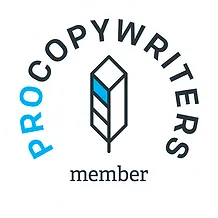I’d like to always start from a blank page, but I’m often asked to work from something that’s already drafted. It’s the closest a copywriter gets to high-octane rescue missions.
Just recently, a client forwarded me a prospecting email that had been written by someone in-house – but, even though the writer knew the business inside out, it was lacking.
The client couldn’t tell me what was wrong. It wasn’t easy to spot where the copy fell down. It was just something you could feel.
They said it needed ‘the Stephen Marsh touch’ (which made me feel like a giggly schoolgirl).
But it also made me think about all those in-house marketing people putting together emails and not being able to see what was going wrong.
I like being helpful (and I’m particularly helpful if you book me). So here’s what I do when I’m faced with some email copy that’s not working – and how in-house writers can make their emails more interesting, engaging and high-performing.
#1 Define the goal
Also known as: what’s the point of the sending this thing out?
Not the big goal of getting more customers and selling more stuff. What’s the actual job of this single email at this single moment in time?
The problem I see all the time is that emails are going for several outcomes at once. In this particular example, people were explicitly asked to reply to the email to arrange a consultation, visit the company website, and call the company phone number.
That’s not a call to action. That’s a to-do list for people that are already too busy to read your email.
I get it. You’re trying to show that you’re accommodating whether people simply want to find out more or whether they’re ready to start talking. But as you attempt to cover all of those potential next actions, you don’t really push people towards any of them.
Choose the one action that you believe the right prospects would be wiling to take. Just one.
And then start gearing everything around making that happen.
#2 Prioritise the value
Also known as: nobody cares unless you make them.
Back to copywriting basics: what’s in it for me?
Maybe that’s just the general benefits of what you’re selling. Maybe it’s something more immediately valuable, like a free download or a special discount.
They’re all fine. There’s no right answer.
But for the love of good email you need to prioritise.
In the email I worked on most recently, there was a real heavy-hitter – a limited time discount. But the writer had gone for a structure akin to:
- I’m writing to you about a product that can save you time.
- Here’s the problem you have.
- Here’s how the product solves that.
- By the way there’s a discount if you want one.
The special offer was getting lost in a place where nobody would see it.
So whatever your biggest bit of value is, make sure you’re putting it front and centre.
There’s nothing wrong with getting “We’ve got an exclusive 10% discount to tell you about, but first…” in your opening paragraph. Ideally you should be trying to get it into your subject line. And it should be stressed in your call to action – not “Go to our website…” but “Go to our website to…”
#3 Give every part a job
Also known as: stop filling this email with pointless waffle.
So you’re giving people a clear task to do and telling them what they’ll get in return. Now it’s time to think about structure.
Ideally, you’re looking for a clear beginning, middle and end. We could also call that engaging, persuading, closing:
- Engaging: Hey, you gotta read this!
- Persuading: Believe me, this product is worth your attention.
- Closing: Here’s what you need to do.
I see a lot of emails that go back and forth. They’ll tell you to get in contact with them, but then there’s another paragraph about product benefits. They’ll ask you to take action before they’ve told you why you should care.
You need to define the function of every chunk of your email.
I do it with bullet points. So, for a recent IT-related email, it was:
- Why we’re emailing you (mention offer)
- Product and three benefits
- Switching is hard – here’s an incentive
- Call to action
When you give yourself that roadmap, it’s an instant way to judge whether a paragraph is doing a good job. If it’s not, it shouldn’t be there. It’s also an effective way to avoid repetition and keep a strong logical flow that carries people from beginning to end.
#4 Shape it for easier reading
Also known as: the default position is ‘this is long and boring’.
The last thing I do isn’t really about the copy itself. It’s about the realities of sending out email in a world where people would probably rather you didn’t.
I always take a look at the density and weight of the email – are paragraphs rambling on for too long? Does it look like a heavy mass of words or a simple, streamlined read? Is it more vertical than it is horizontal?
The way you format copy will affect its emphasis. Breaking statements out onto a single line can keep things light and easily digestible, while adding impact to whatever statement gets that special treatment.
Sometimes, this is also where you’ll see that a subhead or two is necessary to break things up, or where bullets could be put to good use.
The shape of your email matters as much as its content.
But if it’s not already sleek and sexy, that’s easily solved.
If you put any of these into practice on your own emails, I’d love to hear about it.
And, of course, if you’d rather I just did it for you — get in touch.
